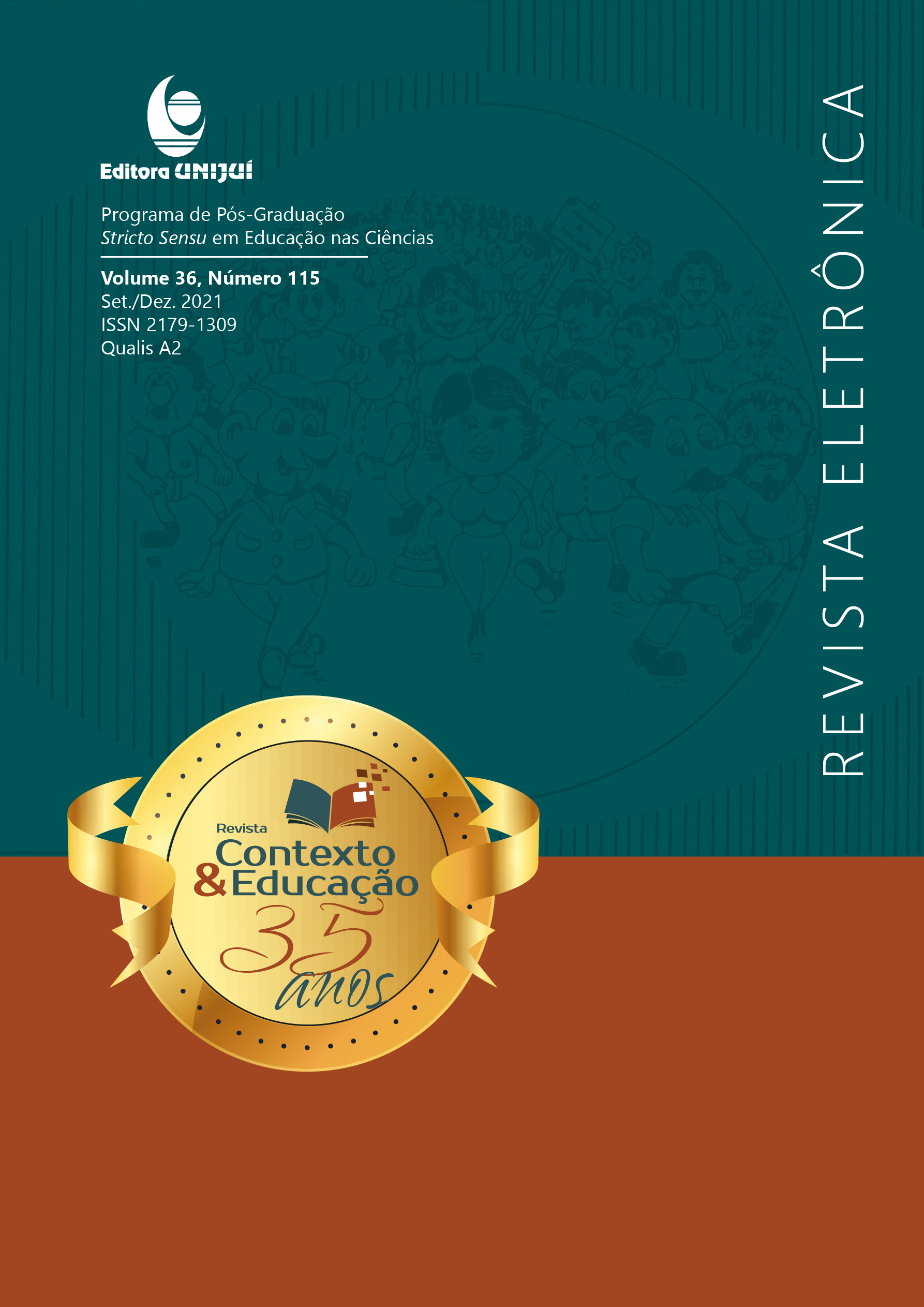ESTRUTURA DE PLANEJAMENTOS DE AULA PARA O ENSINO FUNDAMENTAL: ANÁLISE DE PROPOSTAS DIDÁTICAS SOBRE O SISTEMA CIRCULATÓRIO
STRUCTURE OF CLASS PLANNING FOR FUNDAMENTAL TEACHING: ANALYSIS OF DIDACTIC PROPOSALS ABOUT THE CIRCULATORY SYSTEM
DOI:
https://doi.org/10.21527/2179-1309.2021.115.10144Palabras clave:
Ensino de ciências; Plano de aula; Três Momentos Pedagógicos; Modelo instrucional BSCS 5EResumen
Esta pesquisa investiga e analisa a estrutura e recursos de planos de aula sobre sistema circulatório, disponíveis no Portal do Professor – Ministério da Educação. Foram coletados no Portal todos os planos de aula que citavam o sistema circulatório (141 planos), e selecionados apenas os que e desenvolviam o conteúdo (15 planos) para a análise da problematização, recursos didáticos e avaliação. A análise e discussão da estrutura dos planos foi alicerçada em duas propostas de metodologia de organização, denominadas: Três Momentos Pedagógicos e Modelo Instrucional BSCS 5E. Os resultados indicam que: a problematização predomina como atividades e questionamentos sobre conhecimentos prévios na introdução da unidade ou assunto; os recursos de Tecnologias Digitais e Informação e Comunicação são frequentes, especialmente os vídeos; o processo avaliativo é pouco enfatizado e sem detalhamento ou indicado ao final sob forma de lista de questões. Os planos utilizam alguns elementos das metodologias analisadas, mas são organizações próprias decorrentes da prática docente. Identificar e compreender o que é valorizado pelos professores na construção do plano de aula cria possibilidades para ampliar as discussões e a aplicação de propostas que contribuem para as práticas docentes com reflexos no processo de ensino e aprendizagem.
Descargas
Publicado
Cómo citar
Número
Sección
Licencia
Ao publicar na Revista Contexto & Educação, os autores concordam com os seguintes termos:
Os trabalhos seguem a licença Creative Commons Atribuição 4.0 Internacional (CC BY 4.0), que permite:
Compartilhar — copiar e redistribuir o material em qualquer meio ou formato;
Adaptar — remixar, transformar e criar a partir do material para qualquer fim, inclusive comercial.
Essas permissões são irrevogáveis, desde que respeitados os seguintes termos:
Atribuição — os autores devem ser devidamente creditados, com link para a licença e indicação de eventuais alterações realizadas.
Sem restrições adicionais — não podem ser aplicadas condições legais ou tecnológicas que restrinjam o uso permitido pela licença.
Avisos:
A licença não se aplica a elementos em domínio público ou cobertos por exceções legais.
A licença não garante todos os direitos necessários para usos específicos (ex.: direitos de imagem, privacidade ou morais).
A revista não se responsabiliza pelas opiniões expressas nos artigos, que são de exclusiva responsabilidade dos autores. O Editor, com o apoio do Comitê Editorial, reserva-se o direito de sugerir ou solicitar modificações quando necessário.
Somente serão aceitos artigos científicos originais, com resultados de pesquisas de interesse que não tenham sido publicados nem submetidos simultaneamente a outro periódico com o mesmo objetivo.
A menção a marcas comerciais ou produtos específicos destina-se apenas à identificação, sem qualquer vínculo promocional por parte dos autores ou da revista.
Contrato de Licença (para artigos publicados a partir de outubro/2025): Os autores mantém os direitos autorais sobre seu artigo, e concedem a Revista Contexto & Educação o direito de primeira publicação.


